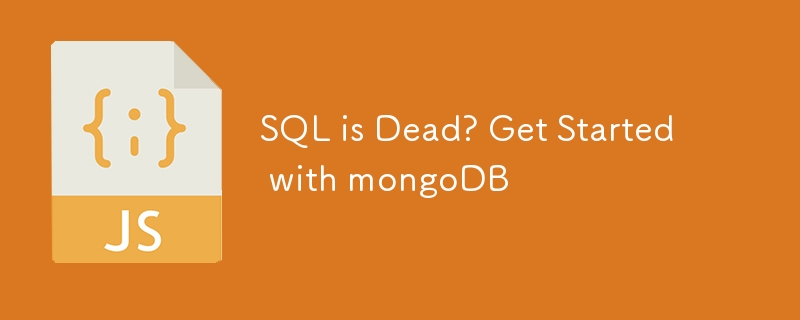

MongoDB is a non-relational database, which means that data is stored as collections.
MongoDB also supports BSON (Binary JSON), a binary-encoded form of JSON that allows for additional data types such as binary, decimal, object ID, and so on.
MongoDB has its own query language, based on JSON and JavaScript grammar, for querying and MongoDB is a non-relational database, which means that data is stored as collections, with each document representing a record and each field representing a value.
1st Login to your mongoDB account after doing login create a new cluster for your database as per your requirements. also mongoDB offers free cluster for beginner’s if they want to learn mongoDB. :)
Package Manager Installation:
Cloud Installation (MongoDB Atlas):
Optionally, install MongoDB Compass or other management tools for easier database administration and visualization.
First, ensure MongoDB is installed and running. You can connect to MongoDB using the MongoDB shell or a MongoDB client such as MongoDB Compass.
In MongoDB, databases and collections are created implicitly when data is first stored. To switch to a specific database or create one explicitly, use the following commands: (use mydatabase)
To insert data into a collection (equivalent to a table in relational databases), use the insertOne() or insertMany() methods:
// Insert a single document into a collection
db.users.insertOne({ name: "John Doe", age: 30, email: "john.doe@example.com" });
// Insert multiple documents into a collection
db.users.insertMany([
{ name: "Jane Smith", age: 25, email: "jane.smith@example.com" },
{ name: "Michael Johnson", age: 40, email: "michael.johnson@example.com" }
]);
Read (Find Documents)
To retrieve data from a collection, use the find() method with optional query criteria:
// Find all documents in a collection
db.users.find();
// Find documents matching specific criteria (e.g., find users older than 35)
db.users.find({ age: { $gt: 35 } });
// Find a single document by its _id
db.users.findOne({ _id: ObjectId("insert-id-here") });
Update (Update Documents)
To update documents in a collection, use the updateOne() or updateMany() methods:
// Update a single document matching a query
db.users.updateOne(
{ name: "John Doe" },
{ $set: { age: 31, email: "john.doe.updated@example.com" } }
);
// Update multiple documents matching a query
db.users.updateMany(
{ age: { $lt: 30 } },
{ $set: { status: "inactive" } }
);
Delete (Delete Documents)
To remove documents from a collection, use the deleteOne() or deleteMany() methods:
// Delete a single document matching a query
db.users.deleteOne({ name: "John Doe" });
// Delete multiple documents matching a query
db.users.deleteMany({ status: "inactive" });
Thank You for reading this post for more like this follow to my account and let me know if you have a suggestions in comment section.
The above is the detailed content of SQL is Dead? Get Started with mongoDB. For more information, please follow other related articles on the PHP Chinese website!




